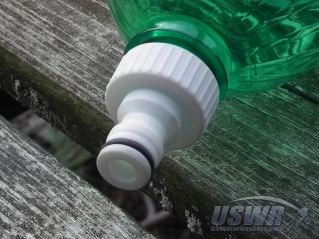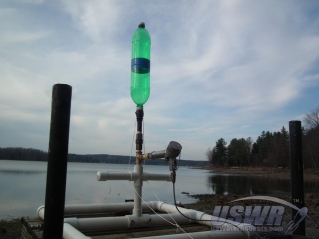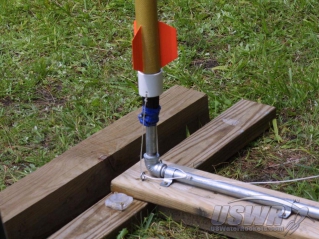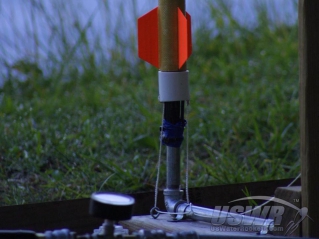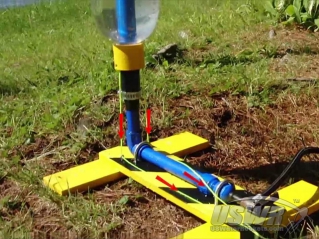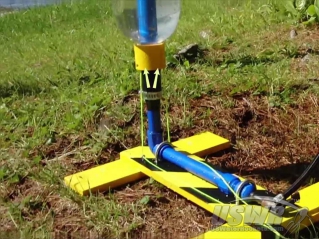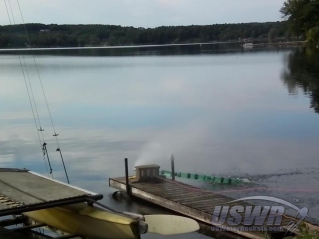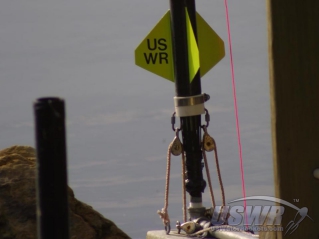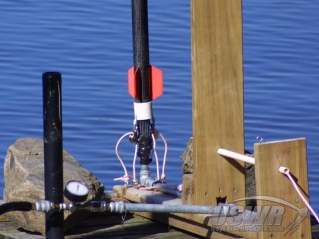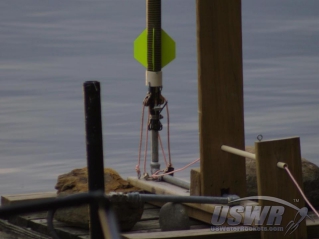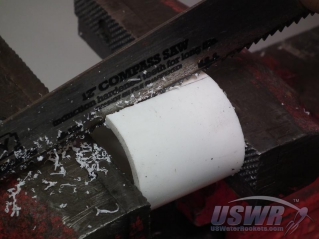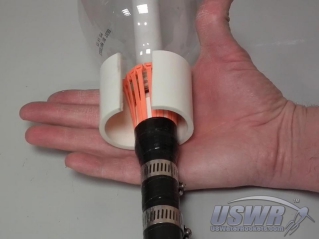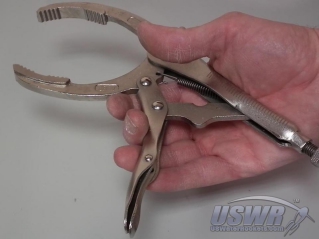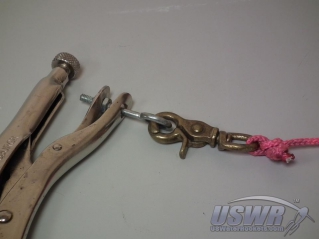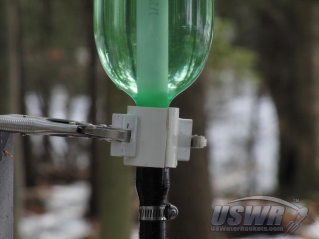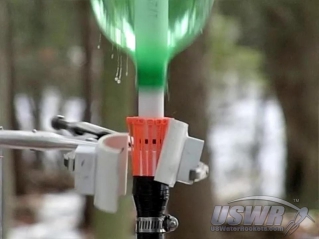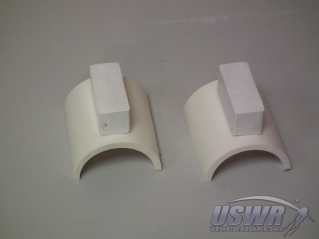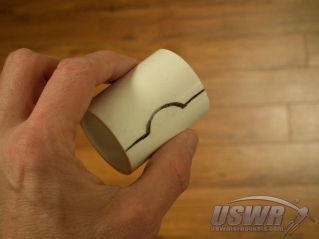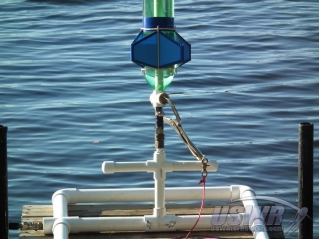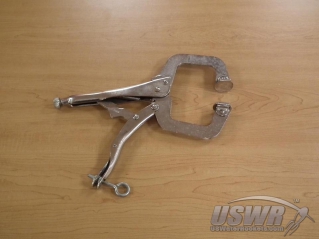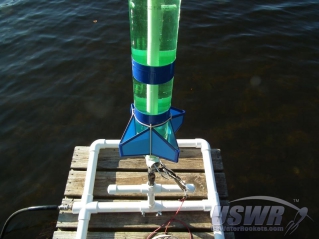History of the USWR Split Collar Cable Tie Launcher.
This Research and Development article introduces our completely new launcher design to the water rocket community, and the history of the evolution of this radical new design.
Introduction:
Water Rocket launcher mechanisms are an important area of Water Rocket design which has received very little attention by researchers for more than a decade. There appear to be only a handful of teams doing work in this area. A sampling of hundreds of discussions taking place on the Water Rocket Forum shows that virtually every team actively participating have been using variations of only two existing launching systems which have remained unchanged for many years.Both of these designs have been reliable workhorses, and have served their respective users needs, in spite of their weaknesses:
1. The Gardena Release:
The Gardena system is made from garden hose quick-connectors. This release is hampered by the small nozzle diameter which restricts maximum speed and altitude, and is difficult to combine with a launch tube, necessitating the use of cumbersome external launch rails. The cheap plastic garden hose connectors which form the core of the release are also not suitable for high launch pressures, limiting their appeal to mostly novice rocketeers.2. The Clark Cable Tie Release:
The Clark Cable Tie system requires a bit more skill to construct, but it allows larger nozzle diameters and internal launch tubes, making them the attractive choice for high performance water rockets. The weakness of this design is that the force required to activate the system increases as pressure in the rocket increases, making the release difficult to trigger at high pressures. Even at moderate pressures, the activation force can be large enough to break the release cord or tip over the launcher.We then constructed a release collar that was split in two halves and would hold the rocket by simply holding the collar halves in place over the cable ties and releasing them to separate and fall away when launching the rocket. We dubbed this release system the "U.S. Water Rockets Split Collar Release".
A detailed step by step tutorial can by found by viewing: USWR Split Collar Launcher Construction Tutorial
We've tested a number of variations of this design and believe there are plenty of other new ideas that can be explored with this release. A few of the adaptations of this release are:
1. We added spacer blocks to the sides of the collar, which allows the locking pliers to pass over fins projecting beyond the rear of the rocket. By passing over the fins, the clamp cannot strike the fins when it snaps open like it does when the clamp passes in from under the fins. 2. We added aligning keys into the cut when splitting the collar, which makes alignment of the collar halves easier. 3. We added cups to the collar halves so that locking pliers with smooth faces would not slip off.
USWR Split Collar Cable Tie Launcher Video:









